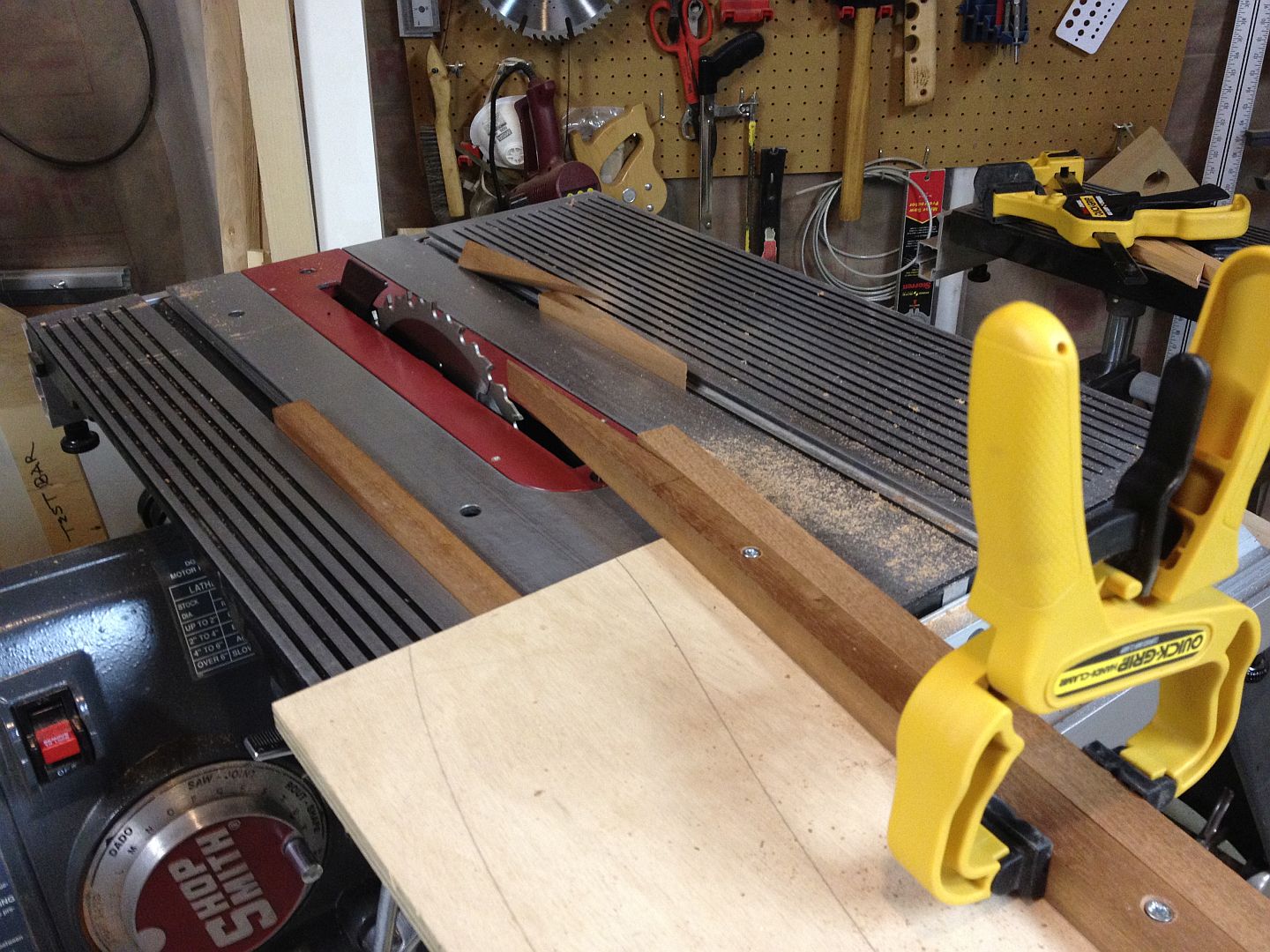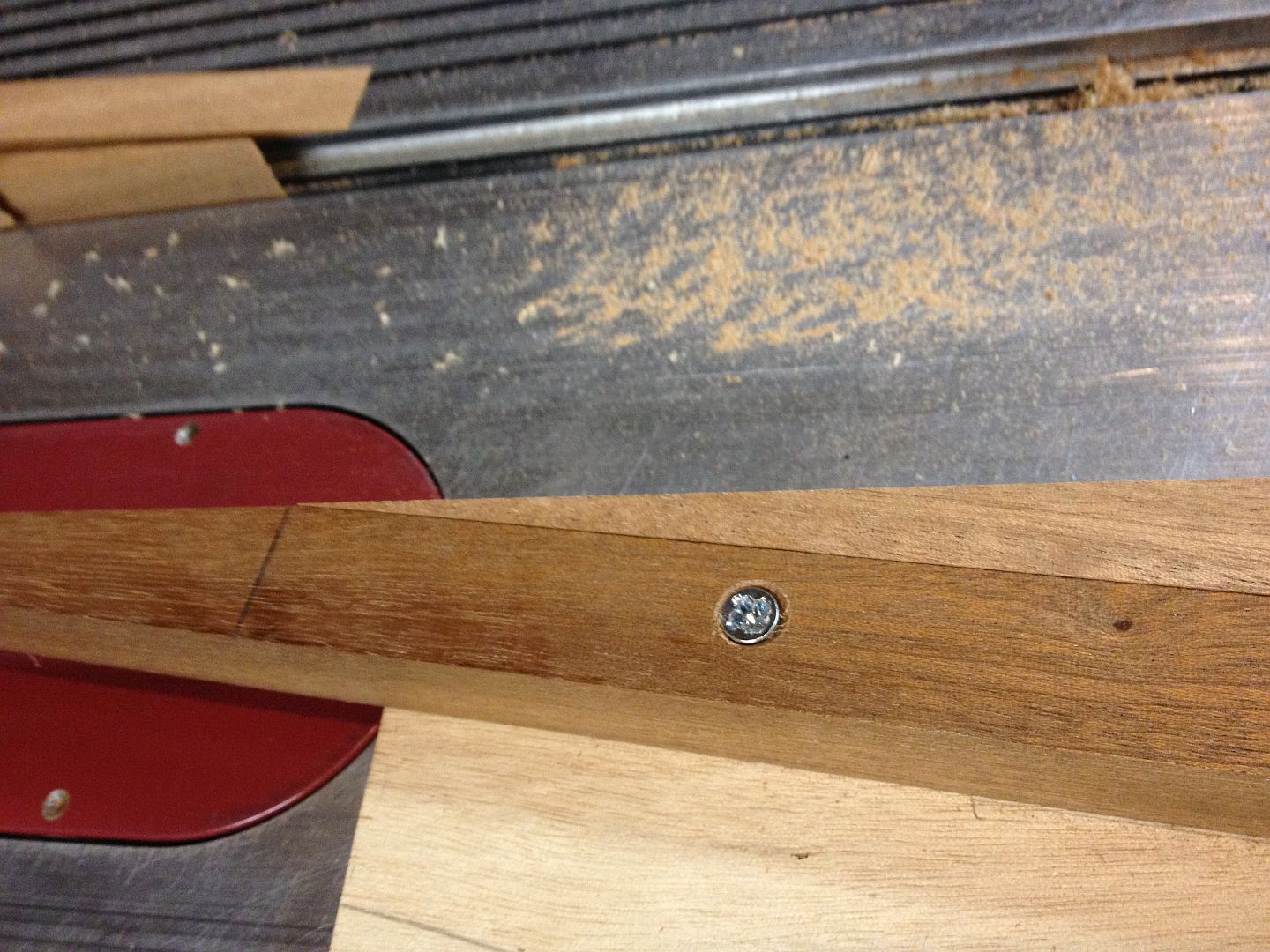Page 23 of 45
Re: A Slow Boat To Nowhere
Posted: Mon Sep 21, 2015 4:32 pm
by JPG
algale wrote:JPG wrote:So, what material does epoxy NOT adhere to? Teflon HDPE nylon ???
It has popped out of various plastic mixing containers (leaves a perfect mold of the cup) and the plastic spreaders used to wet out the fiberglass. Which is why I figured the Saran Wrap would not give me a problem.
I don't know if the micro fibers are what made it stickier or if Saran Wrap is just subject to getting stuck in it.
Get some 'thicker' Saran wrap! So the the modulus of elasticity is greater than the epoxy yield force.

Re: A Slow Boat To Nowhere
Posted: Mon Sep 21, 2015 5:14 pm
by algale
JPG wrote:algale wrote:JPG wrote:So, what material does epoxy NOT adhere to? Teflon HDPE nylon ???
It has popped out of various plastic mixing containers (leaves a perfect mold of the cup) and the plastic spreaders used to wet out the fiberglass. Which is why I figured the Saran Wrap would not give me a problem.
I don't know if the micro fibers are what made it stickier or if Saran Wrap is just subject to getting stuck in it.
Get some 'thicker' Saran wrap! So the the modulus of elasticity is greater than the epoxy yield force.

I think the real solution is to mix it thicker so it won't run. That's what Shipwright told me to do, and I obviously didn't do a good job of following his instructions.
Re: A Slow Boat To Nowhere
Posted: Mon Sep 21, 2015 8:58 pm
by charlese
Golly, Al! I'd like to help with this, but I know very little about epoxy uses.
However, must add this - From your pictures, I suggest losing the Saran wrap except where the aluminum is and use the type of stirring stick that Shipright showed us to scrape away the drips.
Re: A Slow Boat To Nowhere
Posted: Mon Sep 21, 2015 9:07 pm
by BuckeyeDennis
JPG wrote:So, what material does epoxy NOT adhere to? Teflon HDPE nylon ???
Wax paper, I seem to recall from my long-ago R/C airplane days.
Re: A Slow Boat To Nowhere
Posted: Tue Sep 22, 2015 1:27 am
by shipwright
Sheet polyethylene, plain old plastic off the roll - 2 mil, 4mil, whatever but thicker than Saran (which I don't think is polyethylene anyway). It was in the same blog.
Sorry I wasn't here sooner Al. :-)
Re: A Slow Boat To Nowhere
Posted: Tue Sep 22, 2015 7:24 am
by algale
shipwright wrote:Sheet polyethylene, plain old plastic off the roll - 2 mil, 4mil, whatever but thicker than Saran (which I don't think is polyethylene anyway). It was in the same blog.
Sorry I wasn't here sooner Al. :-)
No worries, Paul. The joint was salvaged thanks to JPG's advice and seems none the worse. In fact, I'm very pleased with my first scarf. I just don't want to make such mess and have to go through the extra work of cleaning up the joint next time.
The difficulty is that to keep the joint aligned during glue up, two faces need to be registered against two reference surface and that makes it hard to clean up the squeeze out on those two faces. Plus, I put too much epoxy in the first joint and it was too runny, even though I added what seemed to me like a lot of micro-fibers to what was a small amount of epoxy.
Oh, well, I've got three more to try to perfect my technique.
Re: A Slow Boat To Nowhere
Posted: Tue Sep 22, 2015 7:43 am
by algale
This is a little out of order, but I wanted to post a couple more pics of the scarf cutting jig that shows how it works in operation.
This shows one of the gunwale blanks (the lighter colored wood in the photo) clamped to the jig's fence (darker wood) and ready for scarfing. Note that the the fence is screwed to the base at a very acute angle to the blade (I think between 7-8 degrees), which is why the end of the fence is already tapered; it was effectively scarfed when the jig was run through the blade the first time.

- IMG_2532.JPG (296.25 KiB) Viewed 4759 times
And after running the scarfing jig and gunwale blank through the blade, this is the result: a perfect scarf.

- IMG_2533.JPG (274.51 KiB) Viewed 4759 times
Easy as pie. Just make sure you have infeed support for long pieces (not visible in the pic is that I have a roller stand supporting the long gunwale).
Re: A Slow Boat To Nowhere
Posted: Tue Sep 22, 2015 7:29 pm
by charlese
Question, Al - Why can't you glue up the scarfs making a straight board then do the bending to fit at a later time?
Re: A Slow Boat To Nowhere
Posted: Tue Sep 22, 2015 8:03 pm
by algale
charlese wrote:Question, Al - Why can't you glue up the scarfs making a straight board then do the bending to fit at a later time?
Hi charlese: I'm not sure I understand the question. The gunwale blanks
are straight (or as straight as I could make them) as are the full length scarfed gunwales. If you are looking at the photo where I temporarily clamped the gunwale (with the epoxy messs) to the canoe and are thinking it was pre-bent or glued while on the canoe, it is not. I glued the 2 scarfed pieces together on a flat surface. The reason I took the piece over to the canoe (after the epoxy mess had dried) was to see how much extra length I had in case I decided to cut the mess out and re-scarf them. Luckily, JPG talked me out of that idea and the chisel/sandpaper got the joint usable.
If I have misunderstood the question, let me know.
Best,
Al
Re: A Slow Boat To Nowhere
Posted: Wed Sep 23, 2015 12:07 am
by charlese
You got it right Al -- I assumed bent gluing.
Another question - Why can't you use Titebond III instead of epoxy on the scarfs. It's water proof! And easier to work. 10 minute open time. Longer time for adjustments after the joint is closed. Easier cleanup! You can run a peg through the joint and clamp firmly.
http://www.titebond.com/titebond_wood_g ... _Glue.aspx
Back to making scarfs. I made mine on a RAS. No jig needed.